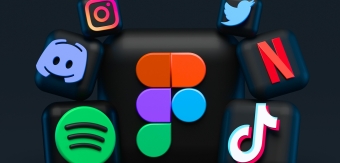In a world where our interaction with shop assistance is reduced to an encounter with robotic refrains of ‘unexpected item in bagging area’, is the personal touch of service too much to ask for? Not according to Uber’s Dev Experience Lead Chris Messina, who predicted 2016 will be the year of conversational commerce (he’s also the guy who invented the hashtag, so #wetrusthim). As chat bots become more advanced, and the hype around new developments reaches fever pitch, we look at what this tech actually is and what brands can learn from the rise of the bot.
A brief introduction to chat bots
What is a 'chat bot'? Basically, it's AI with a helpful persona. These programs imitate conversations, formulate answers to questions and search out information on the internet. What’s great about them is that they’re super scalable, with the ability to live inside any messaging platform. Brands can sit back and relax, as chat bots deal with queries and requests… and potentially increase sales through a personalised service.
WeChat do it right
In American and European app development, there’s been a trend in separating services. Want a taxi? Uber. Shopping? Amazon. Food? Deliveroo. What if all your needs were answered by one app? The Holy Grail of consumer desires. Well, China’s fastest growing messaging service, WeChat, does just that – and more. Yeah, you sort out your transport, shopping and eating needs, but you can also customise your Nikes and pay your water bill on the same platform.
It seems that WhatsApp is taking a leaf out of WeChat’s book. The tech world has often underestimated WhatsApp, despite its 900m strong userbase, as just a messaging app.
But their blog suggests a new move towards chat bot tech:
“Starting this year, we will test tools that allow you to use WhatsApp to communicate with businesses and organizations that you want to hear from. That could mean communicating with your bank about whether a recent transaction was fraudulent, or with an airline about a delayed flight.”
So, what does conversational commerce mean for brands?
Younger generations don’t shy away from engaging with tech like a friend. Having grown up surrounding by social media, messaging services and Siri, talking to tech doesn’t seem as oddly futuristic as it might to older generations. Young people are looking for ease of purchase, above all. They want things instantly, and as consumers, young people today are often accused of seeking instant gratification and seeing their possessions as disposable.
This is why we explored the trope of these generations as being the ‘instant gratification generation’ in our Young Blood research. What we found was a surprising mix of money savviness (90% have savings of some sort) and a desire to upgrade and instantly acquire like never before. What's more,as VentureBeat broke down, they're wholeheartedly willing to adopt and experiment with chat bot technology.
For brands, the interesting developments in technology (which can be found on messaging services from slack to WhatsApp to Facebook Messenger) speak more to this insatiable need for ‘nowness’. Customers want instant reactions to their problems and questions. Lives are now lived in a 24-hour, global timeframe. We don’t just want to buy new shoes or do our banking between the hours of 9-5. Brands need to see the rise of the bots as a chance to tinker their customer service, to develop a tone of voice that moves between automated and real. Instead of the bot asking ‘How can I help’, it needs to say ‘Oh hey, Claire. I noticed you’re trying to order pizza at 1am, but your usual joint is closed. How about we try Papa John’s instead?’. It needs to be reactive, personal and (most of all) instant.
For that, we have to go back to ‘#’ creator and conversational commerce coiner Chris Messina. He says he doesn’t care if chat bots are AI, edited by a human, or a combination of both. He’s not a purist. Really, this is a sensible solution to an issue that Techcrunch writer Arun Uday identified, when he burst the chatbot bubble in an article that suggested, “When a customer has an issue, they would most likely want to skip automated response options and speak to a real person who can fix their problem — not chat with a semi-intelligent bot dishing out some canned responses”. That fine line between ‘real’ conversation and ‘simulated’ conversation could be the chat bots downfall – remember Microsoft’s teenage girl AI, that swiftly turned racist, sexist and fascist only 24 hours after being launched?
Conclusion
So, perhaps the lesson to learn is not if a chat bot can really emulate that personal touch that’s worked so well for brands in the past, but rather how brands can adapt to the fast-paced consumer world that is developing day by day. Simply, the rise of the bots means a chance to develop instant connection to key audiences and to personalise customer service like never before.






